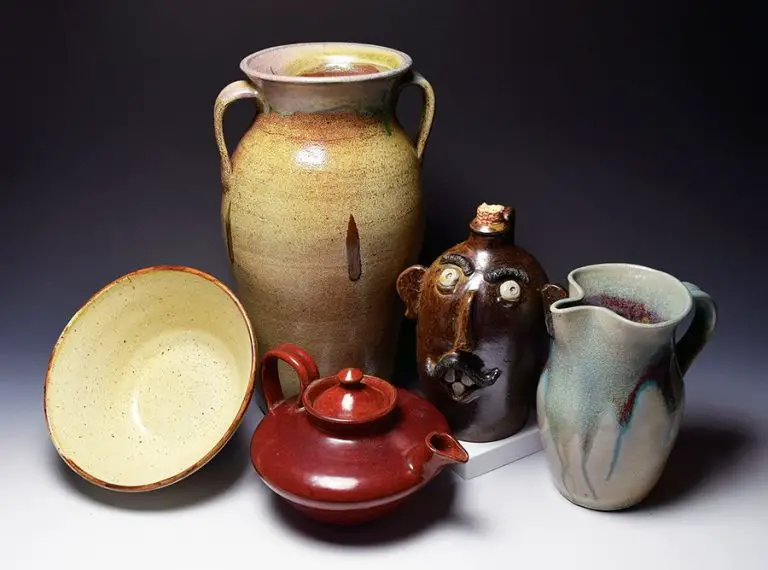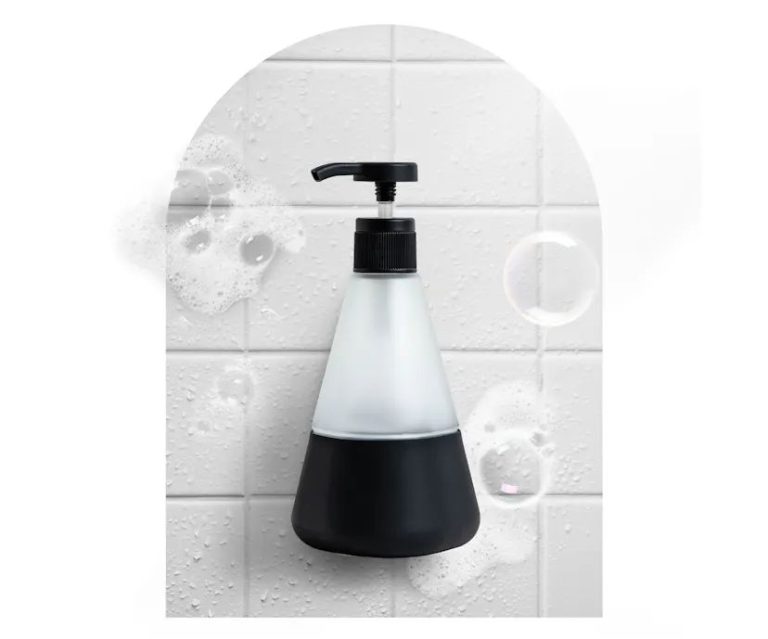How Do You Make Different Flowers Out Of Clay?
Crafting beautiful flowers out of clay is a fun and rewarding activity for both kids and adults. With just a few simple supplies and techniques, you can create gorgeous floral pieces to display in your home or give as gifts. Clay is an excellent medium for beginners because it is so malleable and forgiving to work with.
The best types of clay to use for flower making are polymer clay and air-dry clay. Polymer clay is a high quality modeling clay that cures in a regular oven and does not dry out when exposed to air. It comes in a rainbow of colors and mixes and blends easily. Air-dry clay is a lightweight, inexpensive clay that dries and hardens at room temperature. It’s easy to find and usually comes in white or terra cotta.
Making clay flowers allows you to produce professional looking floral arrangements that will last indefinitely, unlike real flowers. You can customize the flowers in any size, shape, color and texture. It’s also a project you can do at any time of year, without having to wait for blooming seasons. The finished pieces make great gifts, home accents, or items to sell if you want to turn your new hobby into a small business.
Gather Your Supplies
The basic materials you’ll need are:
Clay – the types of clay commonly used are:
- Air dry clay – dries hard at room temperature and doesn’t require baking. Relatively inexpensive and easy to work with.
- Polymer clay – requires baking to harden and is very durable. Comes in a variety of colors.
- Oven-bake clay – self-hardening clay that requires baking at low temperatures to cure. Similar properties to polymer clay.
Sculpting tools – you’ll want an assortment of sculpting tools like:
- Clay shapers and loop tools – for shaping details and smoothing seams
- Clay cutters and plungers – for cutting out shapes and making indentations
- Rolling pin – for flattening and thinning the clay
- Toothpicks or skewers – for poking holes and details
Flower cutters/molds – metal or plastic cutters in various flower shapes and sizes for cutting the clay.
Acrylic paints and brushes – for painting the final clay pieces. Water-based acrylic paints work best.
The supplies you’ll need depend on the type of clay and techniques you want to use. It’s best to gather all your materials ahead of time before starting your clay flower project.
Make the Clay Base
The key to making any clay flower is starting with a properly conditioned and prepared clay base. This provides the foundation for shaping, texturing, and detailing the individual flowers.
For cut-out flowers, you’ll want to roll out slabs of an even thickness to cut your shapes from. Start by kneading your clay thoroughly until soft and pliable. Remove any lumps or air bubbles. Then use an acrylic roller on a smooth, clean surface to roll out a slab about 1⁄4-inch thick. You may need multiple slabs for cutting out all your flowers.
For hand-shaped flowers, condition the clay in the same way through kneading. Then break off small sections that can be shaped individually by hand. The amount needed will vary based on the flower size and number of petals. Take care not to overwork the clay when hand shaping.
No matter the technique, the conditioned clay base sets the stage for bringing your floral designs to life. Allow adequate time for this important first step in clay flower making.
Cut Out the Flower Shapes
Once you have your clay base made, it’s time to cut out the individual flower shapes. There are a couple options for cutting out flower shapes:
Using Cutters and Molds
One of the easiest ways to cut uniform flower shapes is by using cookie cutters, fondant cutters, or silicone molds. Cookie cutters come in all different flower shapes like roses, daisies, orchids, etc. Fondant cutters allow you to cut out more intricate flower designs. Silicone molds can be pressed into to create 3D flower shapes.
Press your cutter or mold into your clay sheet to cut out clean shapes. If the clay sticks, you can dust the cutters with a little cornstarch or rub with a tiny bit of oil. Cut out shapes close together to maximize your clay sheet.
Variety of Flower Shapes
While cutters and molds make cutting easier, you can also cut freehand shapes with a blade or scissors. This allows you to create more unique, organic flowers in any shape you’d like.
Cut circles for daisies, teardrops for orchids, ovals for peonies, five-petal shapes for roses, thin crescent shapes for hydrangeas, and more. Overlap two different sized petal shapes to create full, ruffled flowers.
Don’t worry about perfect symmetry – uneven, asymmetric shapes give flowers a more natural look. Vary the sizes and experiment with different combinations of flower shapes as you cut your clay sheets.
Shape the Flowers by Hand
This is the fun, creative part where you bring your clay flowers to life. Take each flower piece you cut out earlier and begin shaping and molding with your hands.
For flower centers, roll small balls of clay about the size you want the center to be. Roll it between your palms to smooth it into a rounded shape. Use a toothpick or skewer to press a small indentation in the top if desired. Set aside.
For petals, gently pinch and ruffle the edges of each petal with your fingers to soften them and add dimension. Cup or curl the petals as needed to form the shape you want. Work slowly and carefully to avoid tearing the clay.
For leaves and stems, roll clay into logs or teardrop shapes. Use a toothpick or skewer to add veins. Pinch and taper the ends. Bend into natural curved shapes if desired.
Take your time shaping each individual component. The more detail at this stage, the more realistic your final flower will turn out. Don’t worry about perfection – minor imperfections add to the handmade, organic look.
Add Details
Adding unique details to the flowers is what makes them look realistic. For flower petals, consider adding veining, ruffling, or texturing. Use a toothpick or skewer to gently etch veining lines into the petals. For a ruffled look, pinch and gather the edges. For added texture, press the petal lightly over a textured surface like burlap or a sponge.
Flower centers provide an opportunity for extra personality. For a daisy, add a small yellow bead or ball of clay. For a rose, roll a tiny clay cone shape. Add stamen by making thin logs of clay and arranging them in the center.
Focus on the leaves and stems too. Roll out clay logs for the stems, making them thinner at the ends. Use a blade or skewer to add vein details to leaves. Make leaves in different shapes and sizes for variety.
Assemble the Flowers
Once you have shaped all the individual flower parts, it’s time to assemble them into complete flowers. Here are some tips for assembling your clay flowers:
Attaching Petals to Centers
If your flowers have a defined center such as a daisy or sunflower, gently press the base of each petal onto the center piece. Overlap the petals slightly and bend them downward for a natural look. Add a dab of water or floral tape to secure if needed.
Grouping Flowers
Arrange different flowers together into pleasing groups. Odd numbers look best, and varieties of sizes and shapes will give your arrangement more visual interest. Affix flowers to each other with water or tape if you want a permanent bouquet.
Leaves and Filler
Leaves help fill out an arrangement and make it look more realistic. Cut leaf shapes that complement your flowers. Ferns, vines, grasses and buds make great filler around the main flowers. Twist vines around stems or glue leaves in place with water.
Bake or Dry the Flowers
The drying process for your clay flowers will depend on the type of clay you used. Here are some guidelines:
If you used polymer clay – Preheat your oven to the temperature recommended on the clay package, usually around 130°C/275°F. Place your assembled flowers on a baking sheet lined with parchment paper or aluminum foil. Bake for the time specified on the package, generally around 15-30 minutes. The clay should be solid, not sticky, when finished baking.
If you used air-dry clay – You can leave your clay flowers out at room temperature to air dry. Make sure they are in an area free of dust and dirt. Let them dry for at least 24 hours until they feel solid. Using a hair dryer can speed up the drying time, but don’t hold it too close to the flowers.
If you used oven-bake clay – Follow the baking instructions that came with the clay. Typically, you’ll bake at around 130°C/275°F for 15-30 minutes. Test for doneness by feeling that the clay is hardened all the way through.
Regardless of clay type, make sure the flowers are completely dry and hardened before moving on to painting and finishing.
Paint and Finish
Once your clay flowers have been baked or thoroughly dried and hardened, it’s time to paint and finish them. You have a few options when it comes to painting clay. The most common choices are acrylic paint and glazes.
Acrylic paint is an easy, inexpensive option that comes in endless colors. It works great for painting details and designs onto your clay flowers. Acrylics dry fast and provide a matte finish. Keep in mind that acrylic paint can start to crack or peel off of polymer clay over time. Using an acrylic sealer or varnish can help prevent this.
Glazes made specifically for polymer clay result in a beautiful glossy finish. Glazes melt into the clay when baked, making them very durable. They come in various colors and finishes from metallic sheens to crackle effects. The downside is glazes are more expensive than acrylics.
For added texture, try dry brushing. Load a small amount of paint onto a dry brush and lightly brush over raised areas. This creates an antiqued, textured look. It works great on flower petals and leaves.
Once painted, consider applying a protective sealer or finishing spray. This prevents chipping and fading over time. Matte, satin, and gloss finishes are available. Displaying flowers out of direct sunlight also helps preserve their color.
Displaying Clay Flowers
Once your clay flowers are complete, it’s time to decide how to stylishly display your handmade creations. Here are some ideas for showing off your flowers:
Wreaths, Garlands, and Bouquets
Group your flowers together into beautiful arrangements. Create stunning wreaths by attaching flowers onto wreath forms made of wire or grapevine. For garlands, string your flowers together and hang them up to decorate. Make gorgeous bouquets by bundling flowers together and arranging them in vases.
Filling Vases and Pots
Vases and pots make excellent vessels for presenting your clay flowers. Fill tall or short vases with single stems or bundles of different flowers. Arrange blooms in ceramic pots for a pretty tabletop centerpiece. Mix your clay flowers with other decorations like beads, moss or stones.
Gifting Ideas
Your clay flower creations make heartfelt handmade gifts. Make sweet floral bouquets, wreaths or potted arrangements and give them to friends and family. Customize colors and flower types to suit the recipient’s taste. Clay flowers are sure to be treasured for years as unique homemade presents.




